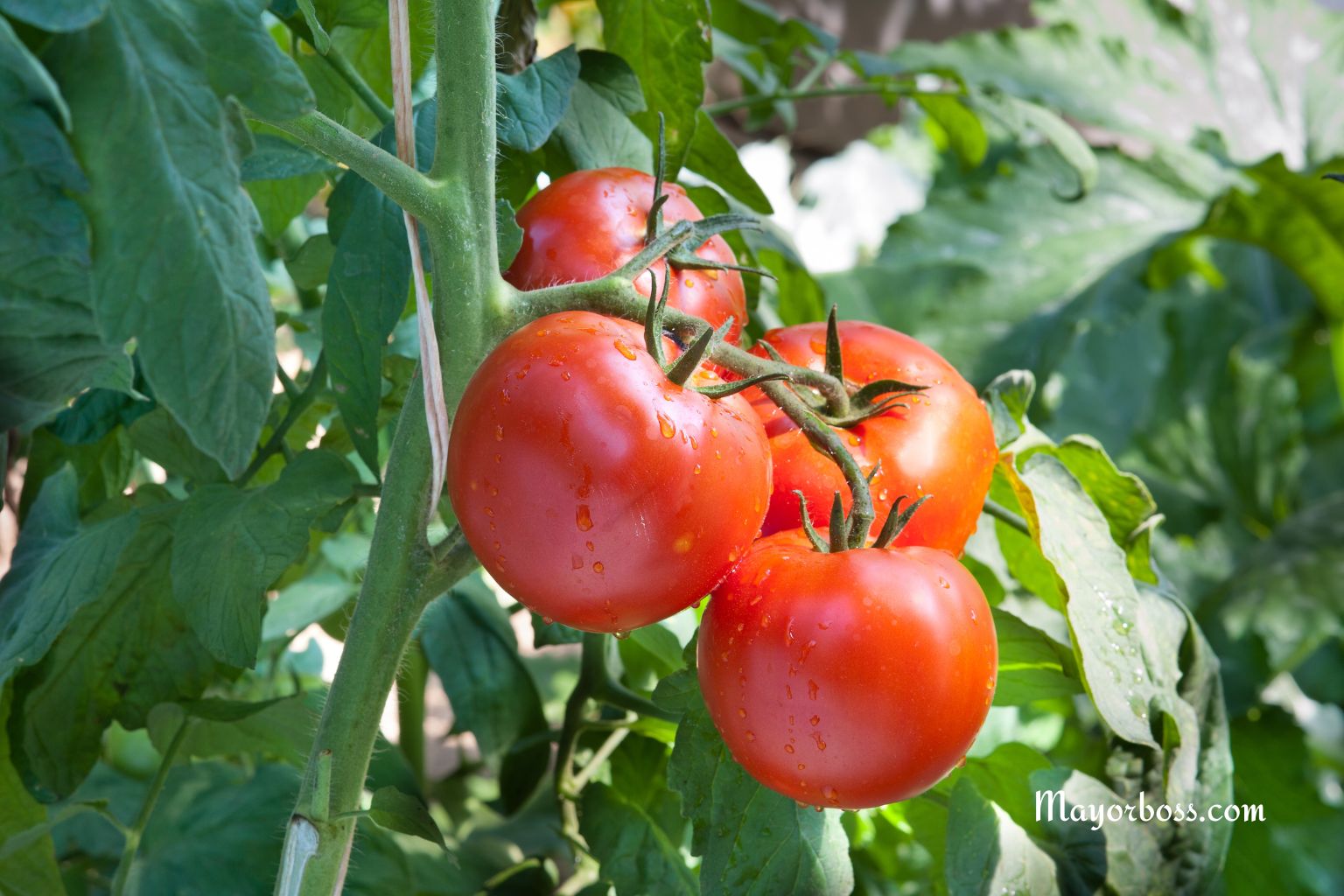The 10 Best Companion Plants To Grow With Tomato For Increased Yields
The best companion plants to grow with tomatoes include basil, marigold, borage, chives, parsley, carrots, lettuce, nasturtium, onions, and garlic. These plants can help boost tomato growth, deter pests, and improve soil health for higher yields.

If you want your tomato plants to thrive and give you more fruit, the answer might be in what you plant around them. Certain companion plants not only help your tomatoes grow stronger but also protect them from pests and diseases. This gardening method is simple, effective, and backed by both experience and research.
Let’s take a closer look at the best companion plants for tomatoes and how they can increase your harvest.
1. Basil
Basil is a classic partner for tomatoes. Gardeners have used this combination for centuries. According to experts, basil helps repel harmful insects, especially tomato hornworms, whiteflies, and aphids. Many people also believe basil makes tomatoes taste better. Plant basil near your tomatoes, and both will benefit.1
2. Marigold
Marigolds are bright flowers that do more than add color. They help keep away nematodes and aphids—two pests that can damage tomato plants. The roots of marigolds release natural chemicals that protect tomatoes from soil-borne diseases. Add marigolds around your tomatoes for beauty and protection.
3. Borage
Borage is an herb that attracts pollinators, such as bees, to your garden. More pollinators mean more fruit. Borage also repels tomato hornworms and improves the health of nearby tomato plants. Its star-shaped blue flowers make any garden more inviting.
4. Chives
Chives belong to the onion family. Their strong scent helps keep aphids and other insects away from tomato plants. Chives are also easy to grow. This means that if you plant them close to your tomatoes, they can help keep the area free of harmful bugs.
5. Parsley
Parsley attracts helpful insects, such as ladybugs, which feed on common tomato pests. It also provides ground cover, keeping the soil moist and cool. Planting parsley next to tomatoes can help you manage pests in a natural way.
6. Carrots
Carrots and tomatoes can grow well together in the same bed. Carrots grow deep underground, while tomato roots stay closer to the surface. This means they do not compete for the same nutrients. Carrots help loosen the soil, meaning it makes it easier for tomato roots to spread.
7. Lettuce
Lettuce is a great companion for tomatoes, especially early in the season. Lettuce grows well in the shade of tall tomato plants. In return, it helps keep the soil moist and reduces weed growth. This makes the growing space more efficient.2
8. Nasturtium
Nasturtiums are colorful flowers that act as a trap crop. They attract aphids and whiteflies away from tomatoes, protecting them from damage. Nasturtiums are also edible and can be used in salads. Their long vines can spread under tomatoes, providing ground cover.
9. Onion
Onions deter pests like aphids, spider mites, and thrips, thanks to their strong smell. They grow well next to tomatoes because they do not compete for the same space or nutrients. Onions also help improve the flavor of tomatoes when planted together.3
10. Garlic
Garlic is a powerful companion plant for tomatoes. It can keep red spider mites and other insects away. Some gardeners also report that garlic helps prevent fungal diseases in tomatoes. Plant garlic cloves around your tomatoes for an easy boost in protection.

How Companion Plants Work Together
When you select the right companion plants, your garden becomes healthier. These plants can:
- Deter harmful insects and attract beneficial ones
- Improve soil quality and structure
- Boost pollination and fruit set
- Suppress weeds and retain soil moisture
This approach reduces the need for chemical pesticides and makes your garden more productive.
Tips For Planting Companion Plants With Tomatoes
- Give each plant enough space. Avoid overcrowding, as plants need room to grow.
- Water at the base. This helps prevent disease and keeps roots healthy.
- Rotate crops every year. This prevents soil-borne diseases.
- Use mulch. Mulching helps keep weeds down and maintains moisture.
- Watch for pests. Even with companion plants, check your garden regularly for signs of trouble.
Final Thoughts
Growing tomatoes does not have to be complicated. Choosing the right companion plants makes your job easier and your harvest more rewarding. With a little planning, you can create a thriving garden that gives you more tomatoes, fewer pests, and healthier soil.
FAQs
1. Can I plant all these companion plants together with tomatoes?
Yes, but give each plant enough space and consider how much sun and water each one needs. Mix and match based on your garden’s size.
2. How close should I plant companion plants to my tomatoes?
Plant them within the same bed or row, but avoid overcrowding. A few inches apart is usually enough, depending on the plant’s mature size.
3. Do companion plants really make tomatoes taste better?
Some gardeners believe plants like basil improve tomato flavor. While this is not proven in all studies, many people report better-tasting tomatoes.
4. Are there plants I should avoid planting with tomatoes?
Yes. Avoid planting tomatoes with cabbage, corn, and potatoes. These can compete for nutrients or attract similar pests.
5. Do companion plants reduce the need for pesticides?
Companion plants help control pests naturally, so you may need fewer chemical sprays. However, check your plants regularly for problems.






